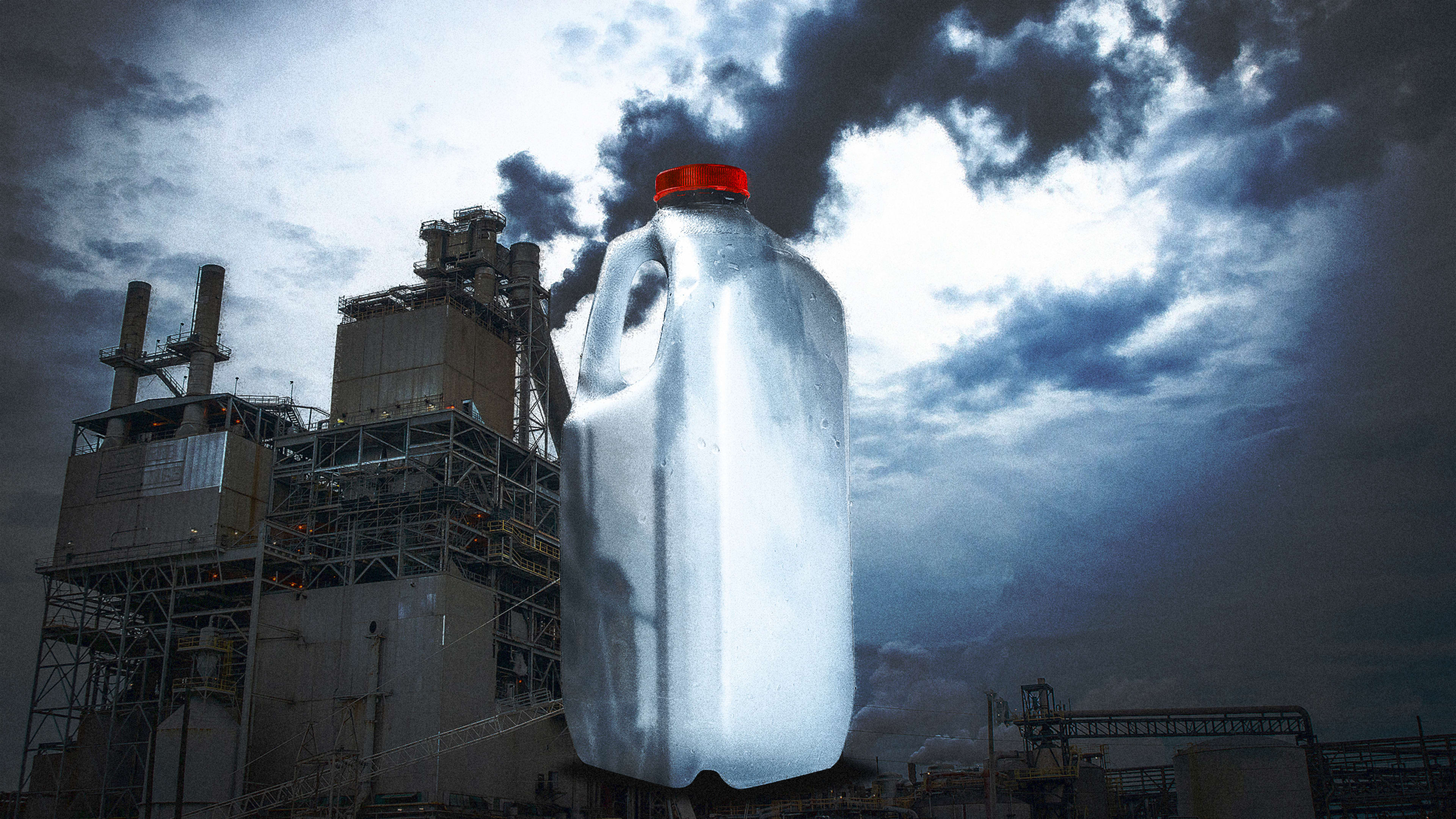When you think of plastic pollution, your first thought is probably of plastic waste dirtying the ocean’s surface. And while the industry is also a major contributor to climate change, the conversation about how to deal with the climate crisis often leaves out plastic as a cause.
By the end of the decade, according to a new report that looks at every part of the plastic life cycle, emissions from the plastics industry in the U.S. could outpace emissions from coal power plants.
“We knew that there were so many new petrochemical facilities being proposed, and that they were large emitters of greenhouse gases,” says Judith Enck, president of Bennington College’s Beyond Plastics project, which produced the report, and a former regional administrator at the Environmental Protection Agency. “And yet when you look at the discussion about climate change, most notably what’s going on in Congress right now in the run-up to COP [the global climate conference] in Glasgow, you never hear a peep about plastics.”
Plastic industry emissions start with fracking. When the energy industry fracks for oil and gas, it also produces ethane, methane, and other gases that are used to make plastic. By 2025, the report estimates, hydrofracking for plastic production could release 45 million tons of greenhouses gases a year—that’s more than the pollution produced by 22 coal power plants. Transporting and processing fracked gases releases more methane, a potent greenhouse gas. At ethane “cracker” facilities, fracked gases are superheated to release components used in plastic production.
“These are multibillion-dollar facilities, often built with government subsidies, and they are super emitters of carbon,” Enck says. The 35 cracker facilities that exist now in the U.S. release around 70 million tons of greenhouse gases a year, as much as 35 coal power plants. More of these plants are planned.
The production of other chemical feedstocks that go into plastic are responsible for another 28 million tons of greenhouse gas emissions a year, the report says. Producing polymers and additives adds another 14 million tons. Exporting and importing plastic and plastic feedstocks is responsible for 51 million tons of emissions. Foam insulation releases more than 27 million tons of emissions. New “chemical” recycling of plastic into fuel or new plastic may release 18 million tons of emissions a year as new facilities open. Incinerating plastic waste emits at least 15 tons of greenhouse gases. When plastic waste degrades in water, it also releases emissions, though the amount has yet to be calculated.
The total emissions from the industry are likely much higher, Enck says. The EPA isn’t tracking emissions from cement plants that are now increasingly burning plastic waste, for example. The industry also causes other types of pollution, including local air pollution, which often disproportionately impacts communities of color.
Although some brands are now taking steps away from single-use plastic packaging, the plastic industry as a whole continues to grow. Globally, plastic production could triple by 2050, according to the World Economic Forum. “I really do believe that plastics are the Plan B for the fossil fuel industry,” Enck says. “We know that because of increased investment in renewable energy and electrification of the transportation sector, the demand for fossil fuels is declining. And so many of these fossil fuel companies . . . have made a big bet on plastics production.”
It’s critical, she says, for governments and businesses to think about plastic in their climate plans. As coal power plants have been closing in the U.S., plastic emissions are simultaneously growing. “I think the experts at COP [the global climate conference] have to recognize that they have to deal with plastics,” Enck says, “because it’s going to eclipse coal as a greenhouse gas emission source.”
Recognize your brand’s excellence by applying to this year’s Brands That Matter Awards before the early-rate deadline, May 3.
